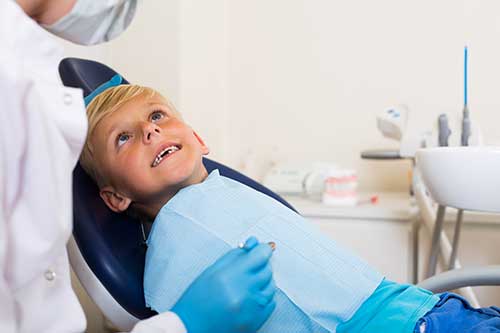The Of Legacy Orthodontics
Table of ContentsThe Best Strategy To Use For Legacy OrthodonticsThe Definitive Guide to Legacy OrthodonticsNot known Factual Statements About Legacy Orthodontics The Definitive Guide for Legacy OrthodonticsThe 7-Minute Rule for Legacy Orthodontics
At Advanced Orthodontics, we supply clients with a all natural therapy experience. On top of that, we use adjustable therapy schedules, flexible settlement alternatives and a fun, enjoyable experience. invisalign. Call ( 480) 357-4900 today for more details and schedule a consultation.An orthodontist is a dental practitioner trained to identify, prevent, and treat teeth and jaw irregularities. Orthodontists function with individuals of all ages, from children to adults.
Malocclusion, or misaligned teeth, can cause oral problems, consisting of dental caries, periodontal condition, and hard or excruciating chewing. However not every person is birthed with straight teeth. If you have a poor bite or huge spaces in between your teeth, you may intend to seek advice from a dentist focusing on orthodontic treatment.
The smart Trick of Legacy Orthodontics That Nobody is Talking About
( Image Credit: DigitalVision/Getty Images) Orthodontists use dealt with and detachable oral devices, like braces, retainers, and bands, to alter the placement of teeth in your mouth. Orthodontic therapy is for oral irregularities, including: Jagged teethBite issues, like an overbite or an underbiteCrowded teeth or teeth that are also much apartJaw misalignmentThe goal of orthodontic therapy is to enhance your bite.
While you could think of orthodontists as mainly for youngsters or teenagers who require dental braces, they can correct dental issues at any type of age. Orthodontists go to university, oral school, and orthodontic college.
All orthodontists are dental professionals, yet not all dental experts are orthodontists. Orthodontic residency programs offer intensive, focused guideline for dental experts. They concentrate on two areas: How to properly and securely move teeth How to effectively lead growth in the teeth, jaw, and faceOnce an orthodontist has finished training, they have the choice to become board licensed.
Legacy Orthodontics Things To Know Before You Get This
Malocclusion leads to tooth overcrowding, a twisted jaw, or irregular bite patterns. Malocclusion is usually treated with: Your orthodontist affixes metal, ceramic, or plastic square bonds to your teeth.
Some people require a headgear to help move teeth right into line with stress from outside the mouth. A retainer is a personalized tool that keeps your teeth in place.
They're frequently utilized on youngsters. They can produce extra space in the mouth without having to pull teeth. If you have a serious underbite or overbite, you might need orthognathic surgical treatment (also called Full Report orthodontic surgery) to lengthen or shorten your jaw. Orthodontists utilize cables, medical screws, or plates to sustain your jaw bone.
You might need to see an orthodontist if you have: Crowding or not adequate room for every one of your teethOverbite, when your upper teeth come by your bottom teethUnderbite, when your base teeth are as well far forwardSpacing or concerns with gapsCrossbite, which is when your top teeth fit behind your base teeth when your mouth is closedOpen bite or a vertical space between your front base and upper teethMisplaced midline, when the facility of your base and upper teeth do not line up Remedying an oral malocclusion can: Make attacking, eating, and talking easierImprove the symmetry of our face and your general appearanceEase pain from temporomandibular joint problemsSeparate your teeth and make them much easier to cleanse, assisting prevent dental caries or tooth cavities It's commonly a dental practitioner that first notices misaligned teeth during a regular examination.
6 Simple Techniques For Legacy Orthodontics

During your first orthodontic examination, you'll likely have: An oral examPhotos taken of your face and smileDental X-raysPanoramic (360 degree) X-rays of your face and headImpressions to create mold and mildews of your teethThese tests will aid your orthodontist recognize exactly how to proceed with your treatment. clear braces. An orthodontist is a dental expert who's had training to treat your teeth and jaw
Orthodontists may do surgical procedure, exams,X-rays,and more to aid you achieve an extra comfy, healthier smile. An orthodontist is concentrated on your bite, so something like a chipped tooth would be dealt with by a dental expert. Orthodontists are dentists but not all dental professionals are orthodontists. Orthodontists are concentrated on your bite, or the means your teeth fit together, and the straightness of your teeth.
Ever wondered exactly how stars always appear to have completely straightened teeth? The response frequently hinges on the competent hands of an orthodontist. What precisely does an orthodontist do? Orthodontists are dental experts that concentrate on fixing abnormalities in the teeth and jaws. Their know-how surpasses simply creating a gorgeous smile; it encompasses enhancing your total oral health and wellness and feature.
The 5-Second Trick For Legacy Orthodontics

, orthodontists have a varied toolkit at their disposal. These reliable dental braces use a system of brackets bound to the teeth and attached by wires.
Clear aligners, like Invisalign, are a preferred option for individuals seeking a much more discreet treatment option. These detachable trays are tailor-made to gradually shift the teeth's position. Headwear may be used in combination with dental braces or aligners to use additional targeted forces, particularly for dealing with jaw inconsistencies. In instances of slim jaws, palatal expanders can be made use of to produce space for proper tooth alignment.